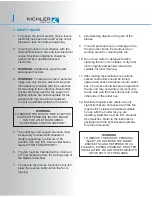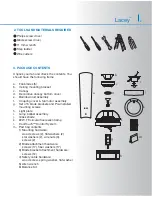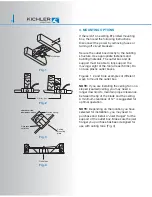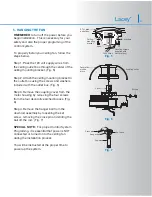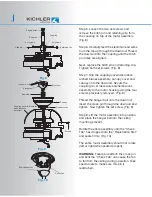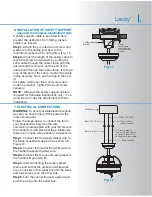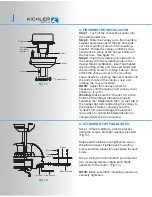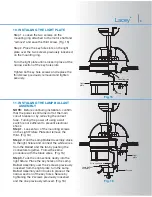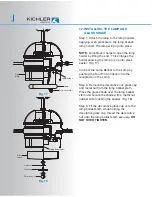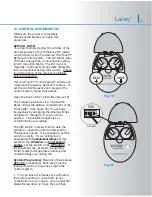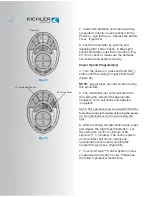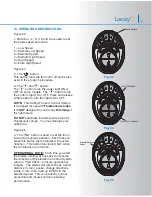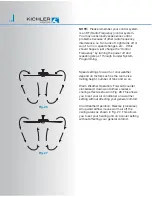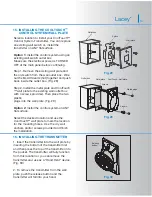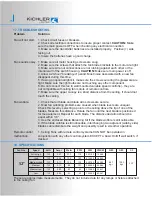
11
Fig. 21
Fig. 22
2. Insert both batteries and make sure they
are seated correctly in each recess with the
Po sign facing up. Replace the battery
cover. (Figure 20)
3. Test the transmitter by pushing and
releasing ANY button briefly. A Blue Light
should illuminate under the 3-4 buttons. (Fig.
21) If not, check to make sure the batteries
are inserted and seated correctly.
Power Up and Programming:
4. Turn the power on, press and hold the
button until the ceiling fan light blinks twice
(Figure 22)
NOTE:
Do not
press any other button during
this procedure.
5. The transmitter just communicated with
the ceiling fan, selected the appropriate
frequency, did a self check and signaled
“complete”.
NOTE: This operation must be started WITHIN the
first 120 seconds (2 minutes) of turning the power
on. No other buttons can be push during this
time.
6. After the ceiling fan light blinks twice, press
and release the High Speed (6) Button. Let
the ceiling fan run for a minimum of 90
seconds ( 1 ½ minutes). The control system
will do another self check, initialize all
operational functions and complete the
programming process (Figure 23).
7. Your CoolTouch™ Control System is now
programmed and ready for use. Please see
the follow Operational Instructions.
Blue Light
#1 Press/hold Button
#2 Press 6 Button


